Cercis siliquastrum - A Small Tree with a Big Garden Impact
Judas tree, love tree
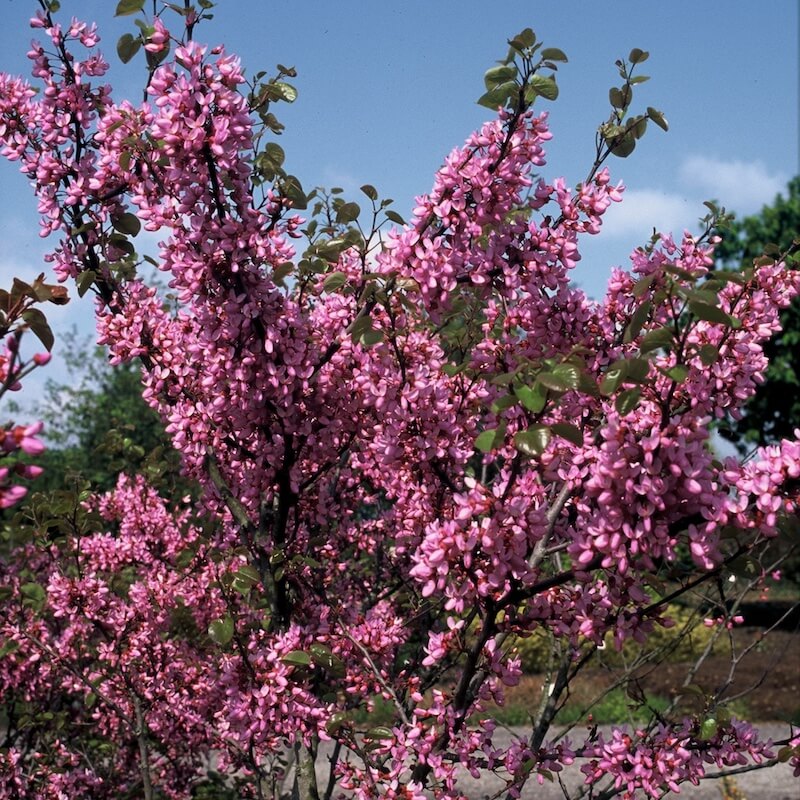
Position
- Prefers full sun for the best floral display
- A warm, sheltered spot—e.g. against a south- or west-facing wall—helps protect early blossom
- Tolerates light shade but flowers less prolifically
Hardiness
- Withstands temperatures down to about –15 °C (5 °F)
- Performs reliably through most UK winters; a mulch in very exposed sites offers extra protection
Soil
- Thrives in well-drained loam, chalky or sandy soils
- Benefits from soil improvement with garden compost at planting
- Avoids heavy clay or waterlogged ground
- Suited to neutral or alkaline soils; tolerates mildly acid conditions
- Best where organic matter helps maintain structure and steady moisture
- Grab a soil test kit and ensure the perfect conditions for growth
Height
- Grows to around 4–5 m (13–16 ft) tall in 5–10 years
Seasons of Interest
Additional Notes
- Prune lightly immediately after flowering to maintain shape and encourage new shoots
- Avoid over-watering in winter; ensure good autumn drainage
- Excellent as a specimen or small-garden tree; also suitable for trained standards or espalier
- Highly attractive to bees in early spring
- Generally pest and disease-free once established
Cercis siliquastrum - The Ornamental Tree with Lasting Beauty
Few plants combine history, romance, and breathtaking seasonal beauty quite like Cercis siliquastrum, more commonly known as the Judas tree. This ornamental tree offers a captivating display of deep pink flowers in spring, followed by colourful foliage and distinctive seed pods that carry interest well into autumn. Whether you’re an experienced gardener or just beginning to design your dream outdoor space, learning how to grow and care for a Judas tree will reward you with years of seasonal drama and architectural charm.
What is the Judas Tree and Why is It Special?
Cercis siliquastrum is a small deciduous tree native to southern Europe and western Asia, celebrated for its spectacular blooms and distinctive growth habit. Often referred to as the “love tree” due to its heart-shaped leaves, it carries centuries of folklore and symbolism. The name “Judas tree” comes from the legend that Judas Iscariot hanged himself from its branches, though today gardeners admire it for far more uplifting reasons.
Its flowers appear directly on bare branches — a botanical phenomenon called cauliflory — which creates a dramatic burst of colour before the foliage emerges. This tree is both drought-tolerant and adaptable, thriving in many garden settings with minimal fuss.
How to Identify Cercis siliquastrum in the Garden
This ornamental tree is easy to recognise. In spring, clusters of pea-like flowers in rosy lilac to deep pink appear before the leaves, creating a vivid display against the bare stems and trunk. The heart-shaped leaves follow, offering a fresh green canopy that turns yellow in autumn.
By late summer, purple-tinted seed pods develop, hanging in decorative clusters along the branches. These pods persist into winter, providing additional seasonal interest. Its manageable size makes it perfect for smaller gardens or as a focal point in a larger landscape.
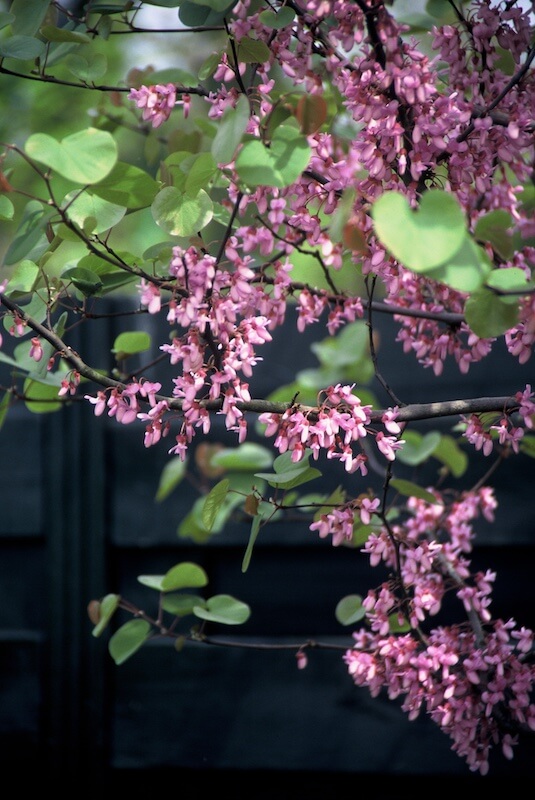
Caring for Your Judas Tree Through the Seasons
Once established, the Judas tree is remarkably low-maintenance. Water young plants regularly until they’re settled, then only during extended dry spells. This drought-tolerant nature makes it a valuable choice for areas with unpredictable rainfall.
Prune lightly in late summer to remove dead or crossing branches and maintain shape. Avoid heavy pruning, as the plant blooms on old wood. Each season brings its own rewards: magenta flowers in spring, lush green foliage through summer, yellow in autumn, and purple pods adding winter appeal.
The Judas Tree’s Flowers – A Springtime Spectacle
The flowers in spring are a gardener’s delight. Clusters of pea-like flowers in vivid shades of deep pink and magenta burst directly from bare branches, stems, and even the trunk. This unusual trait means the tree appears covered in colour before a single leaf has emerged.
These blooms not only look beautiful but also attract early pollinators. Their appearance on bare wood makes them stand out dramatically in mixed borders or as a standalone feature in a lawn.
From Flowers to Pods – Extending Seasonal Interest
After the blossoms fade, pods appear along the branches. These purple-tinted seed pods mature through the summer, providing ornamental value well into autumn. By late season, the foliage shifts to a rich yellow, contrasting beautifully with the pods.
Some gardeners choose to leave the seed pods on through winter for a decorative effect, while others collect them for propagation. Either way, they ensure that the Judas tree remains a talking point beyond its flowering season.
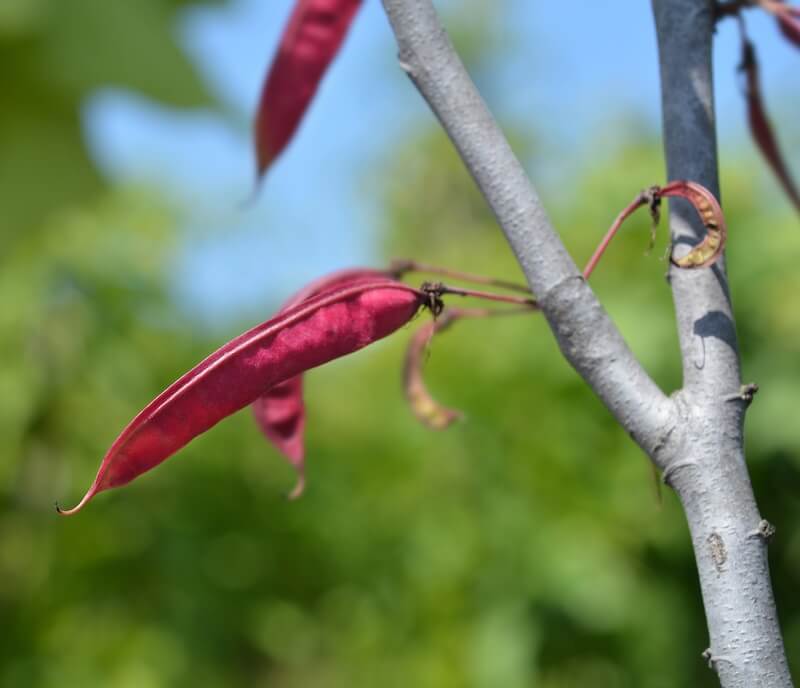
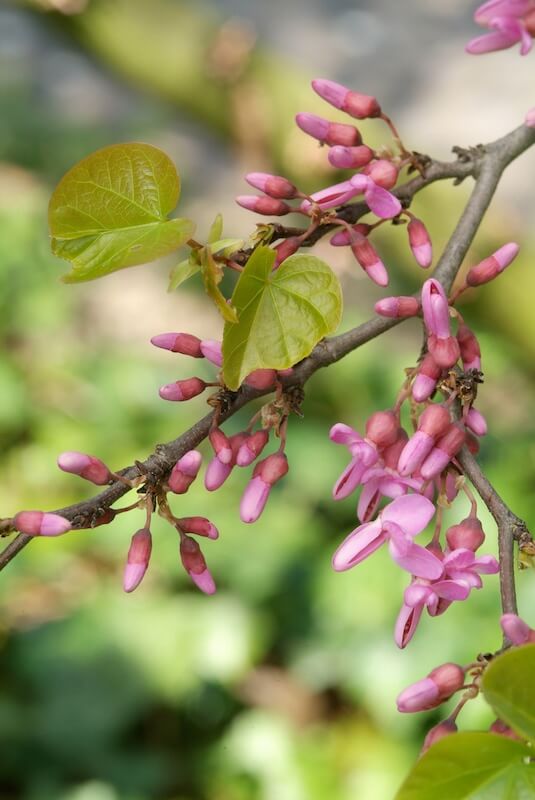
Comparing the Judas Tree with Other Ornamental Trees
Compared with many ornamental trees, Cercis siliquastrum offers exceptional multi-season interest. Unlike some shrubs or small trees that rely solely on their flowers, the Judas tree delivers colour in spring, distinctive foliage in summer, striking autumn tones, and ornamental pods for winter.
Its compact habit makes it versatile for urban gardens, cottage gardens, and more formal settings. Unlike larger deciduous trees, it won’t overpower smaller plots, yet still delivers a strong architectural presence.
The Historical and Cultural Significance of the Judas Tree
The connection to Judas Iscariot may sound sombre, but in many cultures, the Judas tree is also associated with love, renewal, and resilience. Its heart-shaped leaves reinforce its role as a love tree, while its ability to bloom on bare branches symbolises life emerging from dormancy.
Awarded the RHS Award of Garden Merit, Cercis siliquastrum is recognised for its reliability, ornamental value, and garden worthiness. Its Mediterranean origins explain its drought-tolerant nature and preference for warm, sheltered sites.
Tips for Planting a Judas Tree in the UK
While this tree thrives in the milder parts of the UK, it’s best to choose a warm, sunny spot to mimic its native conditions. Well-drained soil is essential to prevent root problems. A layer of compost when planting will boost initial growth and health.
Mulching in spring helps conserve moisture and suppress weeds around the base. As with any small tree, early formative pruning encourages a balanced branch structure. Once mature, maintenance is minimal.
Where to Buy Judas Trees and What to Look For
When you buy Judas trees from a reputable nursery, check for a strong central stem or trunk, healthy foliage, and no signs of disease. Container-grown plants can be planted at most times of year, but avoid waterlogged or frozen soil conditions.
Look for young trees with evenly spaced branches and a good framework. While older specimens provide quicker impact, younger ones often establish more readily and adapt better to their new garden environment.
From Darren’s Patch
There was a Judas tree at my college, over a century old, and when it burst into flower it was simply unforgettable — that spectacle made me fall in love with Cercis siliquastrum and I had to have one in my garden. I use mine as a focal point by the lawn where its magenta blooms on bare branches announce spring long before anything else wakes. It’s remarkably low-maintenance: a light feed in spring, a mulch of compost, and the occasional tidy after flowering are usually enough. I value its drought tolerance and the way its heart-shaped leaves and purple-tinted pods add interest through summer and autumn. For any gardener seeking drama without fuss, it’s a small tree that delivers year after year.
![]()
Key Points to Remember
- Cercis siliquastrum is a small deciduous tree with spectacular deep pink flowers in spring
- Flowers appear on bare branches, stems, and trunk before leaves emerge
- Heart-shaped leaves turn yellow in autumn, followed by ornamental purple pods
- Thrives in full sun and well-drained soil enriched with compost
- Drought-tolerant once established
- Lightly prune after flowering to maintain shape
- Ideal for smaller gardens or as a striking focal point
- RHS Award of Garden Merit winner
- Native to southern Europe and western Asia
- Buy from a reputable nursery for the best start
Cercis siliquastrum flourishes in full sun on well-drained, improved soil of neutral to alkaline pH and is hardy to –15 °C (5 °F). Within 5–10 years, it reaches 4–5 m (13–16 ft), offering a spectacular display of pink blossom in April–May, fresh green foliage through summer and soft yellow autumn colour. Regular light pruning, good drainage and spring compost mulch ensure a long-lived, low-maintenance feature in UK gardens.
Want to learn about other ornamental tree varieties? Read about Carpinus betulus here.
For more information on Ornamental Trees for your garden, please click here.
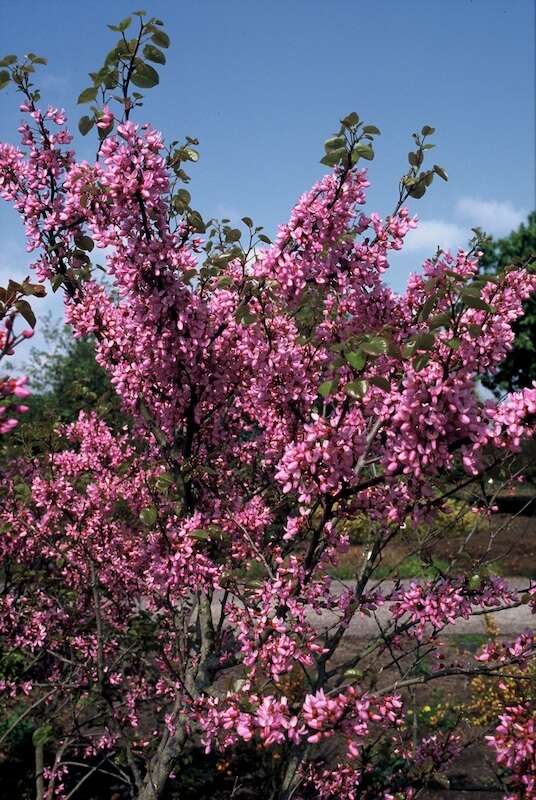
Frequently Asked Questions
Q: What is Cercis siliquastrum, and why is it called the Judas tree?
A: Cercis siliquastrum, commonly known as the Judas tree, is a striking deciduous tree native to southern Europe and western Asia. This ornamental tree is admired for its deep pink flowers in spring, which often appear in clusters directly on the bare branches and trunk, a feature known as cauliflory. Legend links the name to Judas Iscariot, who is said to have hanged himself from a branch of this tree, though this is more myth than fact. Its heart-shaped leaves, which turn yellow in autumn, add to its seasonal charm, making it a captivating small tree for any garden.
Q: When does the Judas tree flower, and what makes it so unique?
A: The Judas tree produces masses of pea-like flowers in spring, often before the foliage emerges. These flowers on bare branches range from rosy-lilac to magenta, creating a dramatic display that brightens the early-season garden. As summer progresses, the tree develops purple-tinted seed pods, which remain into autumn, extending its ornamental value. The combination of colourful blooms, attractive pods, and heart-shaped leaves ensures the tree delivers interest across several months, making it a favourite for gardeners seeking a standout ornamental tree with both charm and resilience.
Q: What are the best growing conditions for Cercis siliquastrum?
A: This deciduous tree thrives in full sun and well-drained soil, preferring a sheltered position to protect its spring bloom from late frosts. While drought-tolerant once established, it benefits from occasional watering during prolonged dry spells. Adding compost at planting will help roots establish, and a light feed in spring can encourage healthy growth. Although tolerant of various soil types, avoid heavy, waterlogged conditions. Ideal for smaller gardens, it can also be grown as a shrub or trained into a multi-stem form, offering flexibility in design.
Q: How should I prune and care for a Judas tree?
A: Minimal pruning is needed, as the Judas tree naturally forms a graceful shape. If required, prune lightly after flowering to maintain structure and remove any dead, damaged, or crossing branches. This helps encourage healthy growth and prevents congestion within the canopy. Apply a balanced feed in spring and mulch with organic matter to retain moisture. Its drought-tolerant nature means it requires little extra watering once mature, making it a low-maintenance choice for UK gardens. Regular observation ensures early detection of pests or diseases, keeping the tree looking its best.
Q: What seasonal interest does the Judas tree offer?
A: The Judas tree is a true year-round highlight. In spring, it bursts into bloom with clusters of deep pink flowers on bare stems and trunk. Summer brings lush green, heart-shaped foliage, while late summer and autumn see the development of purple pods and purple-tinted seed pods. These hang decoratively among the leaves, which turn golden yellow in autumn before falling. Even in winter, the sculptural branches and elegant trunk lend structure to the garden, making Cercis siliquastrum a focal point in every season.
Q: Where can I buy Judas trees?
A: You can buy Judas trees, including Cercis siliquastrum, from reputable garden centres, specialist nurseries, and trusted online suppliers. When purchasing, choose healthy, well-rooted young plants or container-grown specimens to ensure strong establishment. Bare-root plants are often available in the dormant season, while potted trees can be planted year-round. Sourcing from a reliable supplier ensures your ornamental tree will thrive, rewarding you with flowers in spring, attractive seed pods, and vibrant seasonal colour for years to come.
